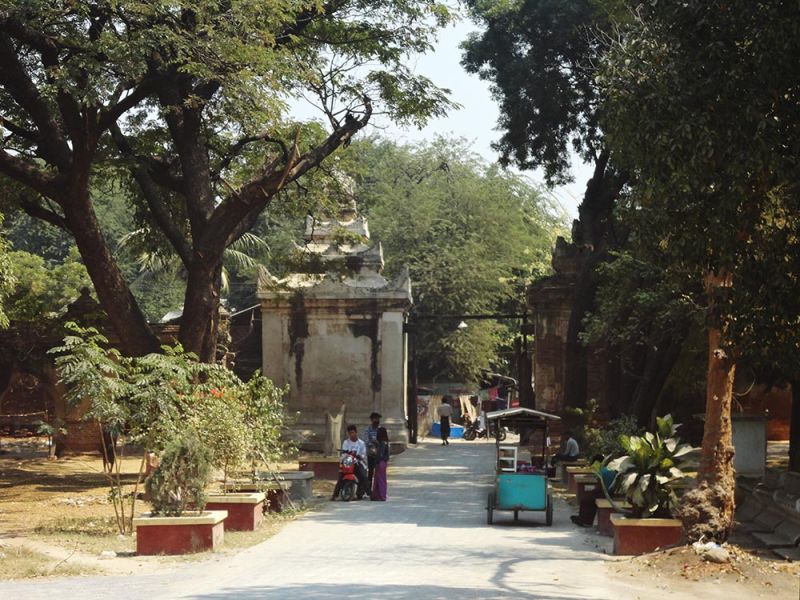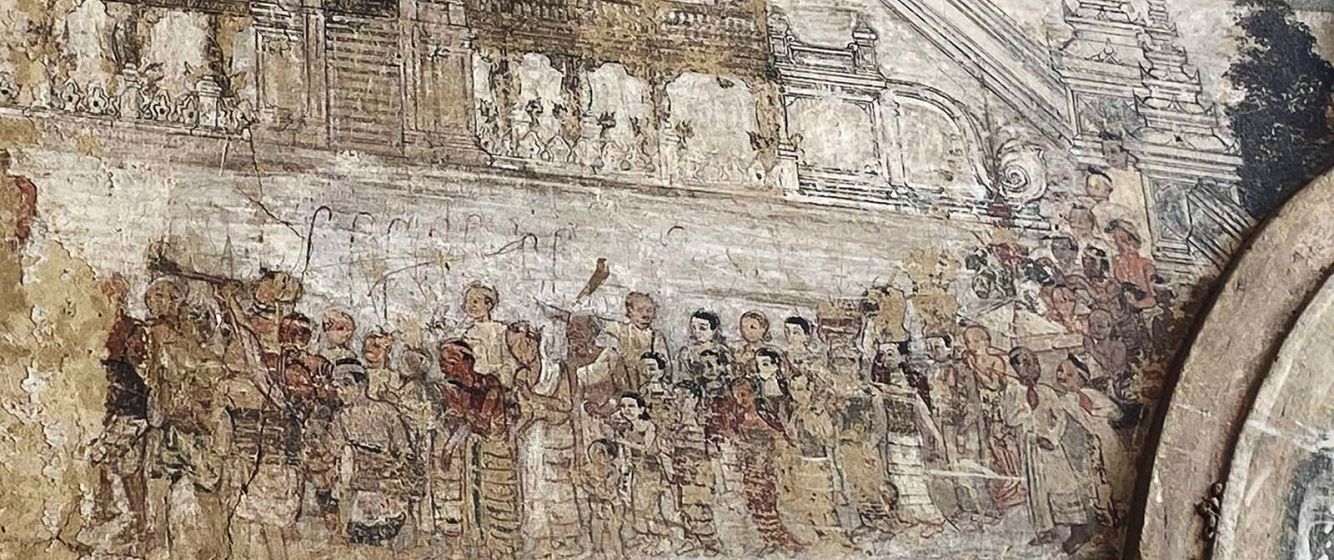This post is part of the reflections of the first year MA students of Cultural Anthropology and Sociology at University of Mandalay from their field visits.
Sai Phyo Zin Aung, another first year MA student who went to the field visit chose Kyauk-taw-gyi pagoda built by King Pagan in 1874 to explore. The pagoda is also connected with weaving as visible in the art on the roof.
He wanted to connect the site of Kyauk-taw-gyi pagoda with the concepts of space, place, the historical background of weaving and the voices of the people. Sai Phyo Zin Aung observed that:
While the term space can be described as a location that has no social connections for a human being and has no value; the term place refers to how people are aware of and attracted to a certain piece of space. Thus, a place can be seen as space that has a meaning. A place is more than just a location and it is created by human experiences. The size of this location does not matter and is unlimited. It can be a city, a neighbourhood, a region or even a classroom.
For example, Kyauk-taw-gyi pagoda can be considered as a space if there is no attached meaning and functions for human. However, when the values, meaning and function are added to the pagoda, it becomes a place because when we see pilgrims, tourists, couples, students, shopkeepers, construction workers, and children visiting the pagoda, it becomes meaningful. For these people, the space, Kyauk-taw-gyi pagoda, has different meanings and functions. For the pilgrims, this space is a religious place where they pray, meditate and wish but also this place is a infused with holiness, nobility and peace for them. However, for tourists, the pagoda is a place to visit and see the tangible culture of Myanmar. At the same time, for couples, this pagoda is a place to date while students see the pagoda as their area of study. Meanwhile, for shopkeepers, the pagoda is a place for their economy and for children…a playground. For construction worker, this place is their workplace and also a place for their social network. Here, if we analyse it with Practice Theory of Bourdieu, we could see the transformation of cultural capital into economic capital.”

Kyauktawgyi Pagoda, Amarapura township, Mandalay City, Myanmar
Sai Phyo Zin Aung continued:
I learnt that people use Kyauk-taw-gyi for different reasons and it has different meanings for people. For example, a 19-year-old male student said, ‘This pagoda is a place to study for us. We always come to this pagoda before the exam because this place is quiet, peaceful and it helps us to increase our concentration.’

From this conversation, one can argue that a place is attached with meanings, values and functions. The meaning, values and functions depend on the social actor’s decision.
To conclude, we can argue that when a space is attached with meanings and functions, it becomes place.
Kyauk-taw-gyi: The meaning, values and functions depend on the social actor’s decision
